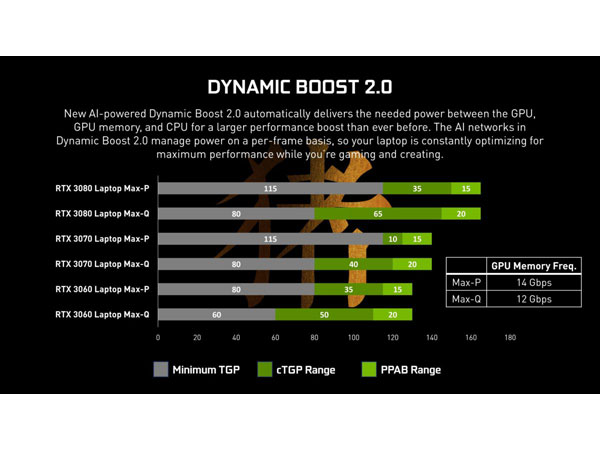Nvidia has changed the GPU’s TGP and clock representation from recommendations to requirements on notebooks with the GeForce RTX 30 series for mobile to notebook manufacturers.
This seems to be due to continued criticism that it is difficult for consumers to measure performance because manufacturers only display the GPU type and not the TGP and clock when it is the existing recommendation.
Even though the same GPU is used, the power consumption (TGP) design and clock setting are different depending on the notebook design, which leads to a significant difference in performance. Laptops using the mobile RTX 3070 have been confirmed by tests that the GPU performance varies by about 30% depending on the design.
According to the news, The Verge said Nvidia asked OEMs to update the Max-Q technology description on the product page to see the expected performance of the system GPU. (We’re requiring OEMs to update their product pages to the Max-Q technology features for each GeForce laptop, as well as clocks and power — which communicates the expected GPU performance in that system)
Accordingly, it is expected that at least the performance expected when purchasing a laptop using the same GPU can be compared, thereby minimizing the damage of buying expensive laptops with low gaming performance.
On the other hand, after Nvidia changed the TGP and clock markings of the mobile GeForce RTX 30 series to’required’, some manufacturers display related information on their laptops, but there are still many unmarked products, so all manufacturers update related information on their products. It seems that it will take some time.
–
–


